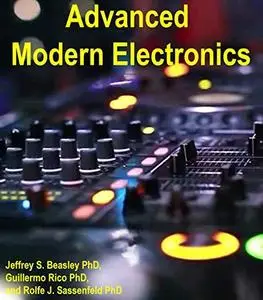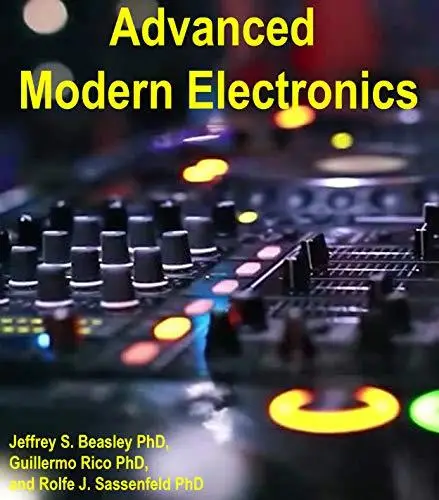Advanced Modern Electronics by Jeffrey Beasley
English | May 5, 2019 | ISBN: N/A | ASIN: B07RGHWN5J | 266 pages | PDF | 29 Mb
English | May 5, 2019 | ISBN: N/A | ASIN: B07RGHWN5J | 266 pages | PDF | 29 Mb
Advanced Modern Electronics is a modern, thorough treatment of the topics
traditionally covered during a second semester course in electronic device
theory and applications. The minimum preparation for students
beginning their study of this material is a course in DC and AC circuit
analysis. Students will need an understanding of impedance concepts and
must be able to perform phasor computations before beginning Chapter
3, “Frequency Response.” Therefore, students who begin their study
without having completed a course in ac circuit analysis should be taking
that course as a corequisite. Basic calculus is used as needed for the
development of theoretical principles, such as in the discussion of slew rate,
electronic differentiators, integrators, and wave shaping.
Principal considerations in selecting topics for this edition were the significance
of each topic in modem industrial applications and the impact that
they are likely to have on emerging technologies. Consequently, integratedcircuit
applications are presented in great detail, including coverage of analog
and digital integrated circuit design, operational amplifier theory and
applications, and specialized electronic devices and circuits such as switching
regulators and optoelectronics.
Each new concept in Advanced Modern Electronics is introduced
from a systems or block diagram approach. For example, the effect of the
input and output resistance on the voltage gain of an amplifier is
developed in Chapter 1 by regarding the amplifier as a functional block
rather than as a particular circuit. Once the fundamental concept has
been thoroughly discussed, it is applied to each amplifier studied
thereafter. A similar approach is used to develop the theory of the
feedback, frequency response, amplifier bias, distortion, linearity,
oscillation, filters, voltage regulation, and analog and digital transistor
circuit-building blocks.
Topics include: Amplifier Fundamentals, Ideal Operational Amplifier
Circuits and Analysis, The Inverting Amplifier, The Noninverting Amplifier, The Voltage Follower, Voltage Summation, Subtraction, and Scaling, Decibels and Logarithmic Plots, Series Capacitance and Low-Frequency Response, Shunt Capacitance and High-Frequency Response, Transient Response, Frequency Response of BJT Amplifiers, Frequency Response of MOSFET Amplifiers, Modeling an Operational Amplifier, Feedback Theory, Frequency Response, 4 Slew Rate and Rise Time, Offset Current and Voltages, Electronic Integration, Electronic Differentiation, Phase-Shift Circuits, Instrumentation Amplifiers, Active Filters, Logarithmic Amplifiers, Wave Generation and Shaping, Voltage Comparators, Hysteresis and Schmitt Triggers, Multivibrators and Waveshaping,, Oscillators, Clipping and Rectifying Circuits, Clamping Circuits



